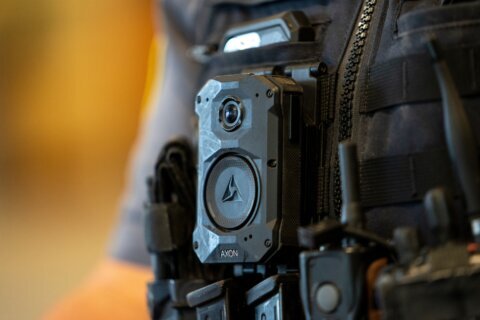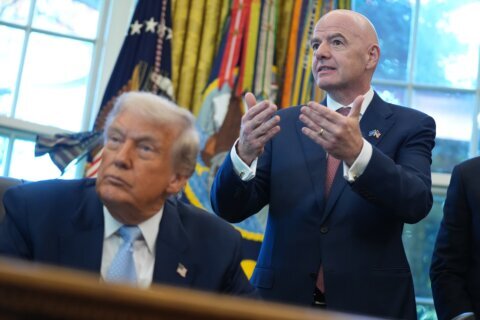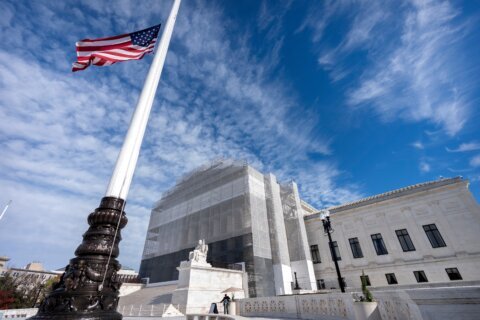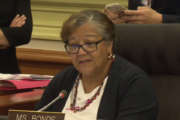DAVE SKRETTA
AP Sports Writer
Strolling casually through the storied grounds of Indianapolis Motor Speedway this week, Scott Goodyear kept getting stopped by fans clutching a photograph and hoping for an autograph.
It was the same photo every time: That iconic image of the finish line in 1992, when he finished second to Al Unser Jr. by a fraction of a second in the Indianapolis 500.
“I think it still resonates,” he said, “because so many people remember seeing it on TV.”
Indeed, the closest finish in race history remains one of the most memorable moments in a marriage between the Indianapolis 500 and ABC that will celebrate its 50th anniversary Sunday — right along with Danny Sullivan’s infamous spin-and-win, A.J. Foyt’s triumphs and the year that Danica Patrick became the first woman to lead a lap.
What began as a simple, black-and-white highlights package in 1965 on the seminal “Wide World of Sports” program has grown into one of the marquee events in ABC’s sports portfolio, and a test ground for innovations such as in-car cameras that are now common in auto racing coverage.
Rich Feinberg, ESPN’s vice president in charge of motorsports production, said the event is among those few “special opportunities.”
“When we work the Indy 500,” Feinberg said, “we’re entrusted with it. We’re entrusted with taking this monumental event and bringing it to viewers around the world. It’s one that’s been around 100-plus years, and you have a special sense of responsibility when you work on a project like this. You never have to tell people who work on it how important it is to do well.”
While the race itself has begat plenty of stars, so has the broadcast.
ABC veteran Chris Schenkel worked the 1966 race, and the legendary Jim McKay called the first of his 18 telecasts when the Indy 500 appeared in color for the first time the following year.
Keith Jackson, known more for his college football calls, stepped in to anchor the 1975 race, and just last year, Lindsay Czarniak became the first woman to host ABC’s telecast.
“When I was 10 years old, ABC started showing the race with a Sunday night tape-delay,” said Allen Bestwick, who will take over lap-by-lap duties from Marty Reid this year.
“That was appointment viewing for us,” Bestwick said. “We watched it every year, and that was before CBS began showing the Daytona 500. It was before racing was shown on television. It was a big, big deal. Jim McKay, Jackie Stewart, Chris Schenkel — you name it. And those people and that broadcast is what got me interested in being a broadcaster.”
Innovation has become as much a part of the Indy 500 as the race itself.
Al Unser and Rick Mears carried the first onboard cameras used in Indy 500 coverage for the 1983 race, three years before it was televised live for the first time. In 2006, ABC introduced the “side-by-side” format, allowing viewers to continue watching during commercial breaks. And the following year, the race was broadcast in high definition for the first time.
Two years ago, ESPN began streaming onboard cameras on ESPN3 during the telecast, giving fans watching at home — or on phones and tablets at the track — another way to see the action.
“That innovation goes down through the history of ABC,” Bestwick said. “Just think about an IndyCar, where everything is weight, and you develop a camera that you can put on an IndyCar and ride around a speedway at 200 mph. All those challenges technically and personally have been a staple of ABC as long as I can remember.”
In 2011, ESPN and Indianapolis Motor Speedway announced a six-year agreement that began last year and will keep the race on ABC through 2018. That means the network will be able to celebrate another milestone in two years: The 100th running of the “Greatest Spectacle in Racing.”
For now, it’s all about celebrating the 50th anniversary on ABC.
Feinberg said the network has produced several packages for the pre-race show highlighting the rich history, but he added, “We don’t want to turn the camera lens on ourselves.”
“You’ll hear from people who have been involved with it,” Feinberg said, “but the story is really about the great moments in the race over those 50 years. We’re there to celebrate the Indy 500 and the incredible athletes that hop in these cars and pilot them. It’s really about them and our fans’ affinity for them that makes this special.”
Copyright 2014 The Associated Press. All rights reserved. This material may not be published, broadcast, rewritten or redistributed.







